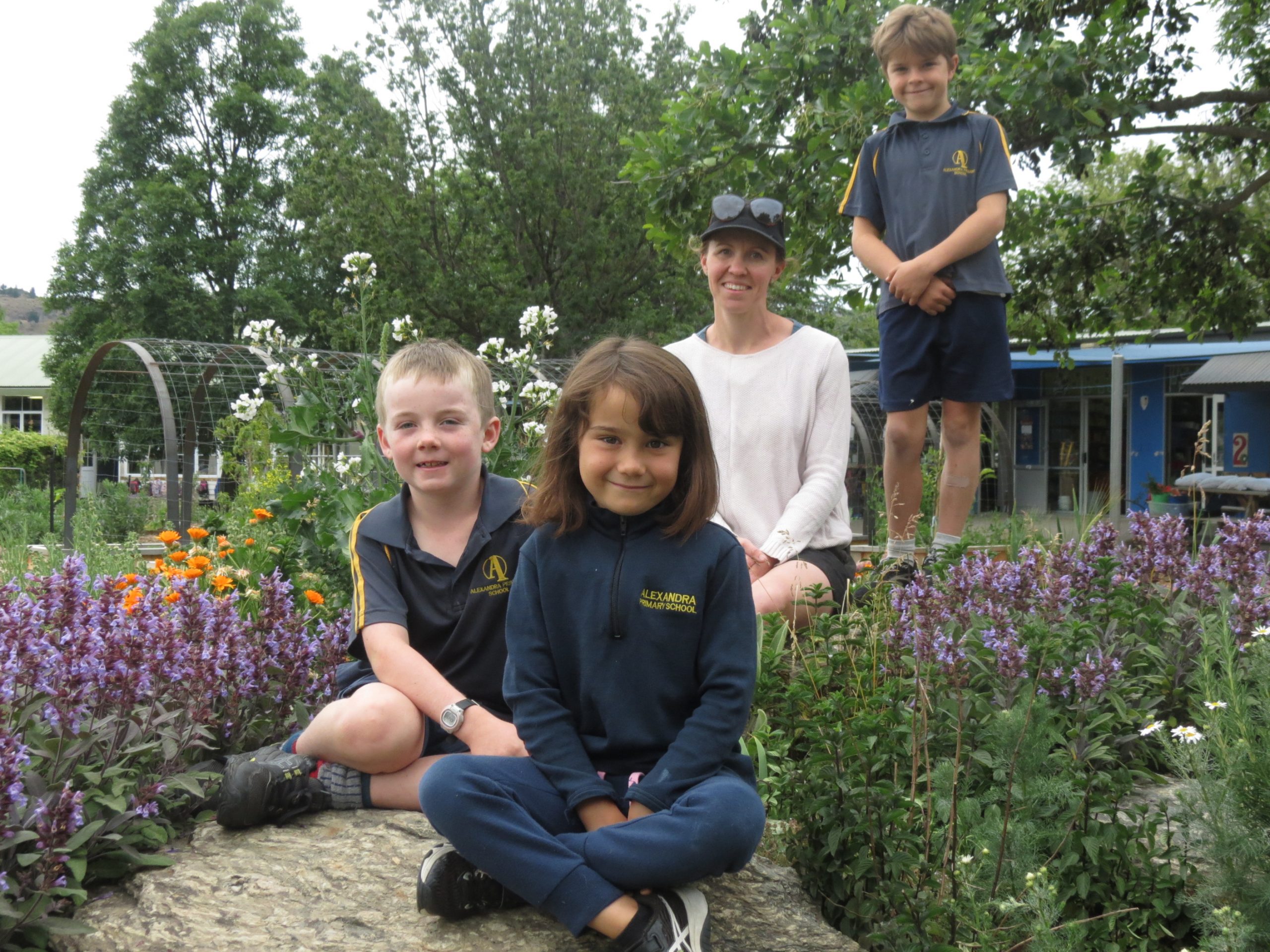The Alexandra Primary School food forest lives up to its name, with pupils excited about growing their own kai and the prospect of sharing their harvest with the community.
That enthusiasm was rewarded last week when their garden was one of 10 winners announced nationwide in the inaugural Keep New Zealand Beautiful Kai Garden Competition.
Pupils Toby Longman, Ollie Marshall and Lily Hinsen thought the recognition was ‘‘awesome!’’
‘‘It’s pretty cool,’’ said Toby.
‘‘It’s amazing,’’ added Ollie. ‘‘We just started it this year but it’s grown a lot.’’
The competition gives schools and early childhood education providers across the country the opportunity to create a small kai or rongoa garden to help pupils develop a greater understanding of the natural world and to gain hands-on gardening experience.
Alexandra Primary School recently received a Ministry of Education grant to refresh its ageing buildings, and used it as an opportunity to set aside a much larger space for their kai garden, and to include a larger diversity of plants.
Garden club co-ordinator Danielle Dunn said the school’s food forest concept meant it had created a diverse and sustainable garden system.
‘‘It’s an incredibly rich resource which will serve to expand our tamariki learning opportunities and bless our community as the forest layers and canopy matures, and the harvest expands in the years to come.
‘‘We think creating a food forest is very relevant for the times we are living through with climate change and economic pressures making food insecurity more commonplace. Our vision is to create a garden using food forest permaculture principles to produce a bounty of fresh fruit and vegetables to inspire, connect and share with our community.’’
The concept relied on including multiple layers of food-producing plants and the 200sq m garden included a wide variety of plants.
There are fruit trees, berries, perennial vegetables and annual vegetables. These are supplemented by a range of companion plants including herbs, flowers and medicinal plants with different types of root systems to create a living mulch.
The food forest is designed to be more resilient against Central Otago elements than a traditional annual vegetable garden.
‘‘By having a diverse range of crops and many longlasting perennial plants, the big root networks below the ground promote a diversity of soil life and activity which feeds back into the health of the plants,’’ Ms Dunn said.
The materials used for the garden edging, planter boxes and archway included local schist, macrocarpa, composts made by the school and even offcuts of steel hydro dam powerstation pipe.
This was the first year of the Keep New Zealand Beautiful Kai Garden Competition, and more than 80 design submissions were received.
The competition aimed to benefit pupils through academic achievement, healthy eating concepts, environmental kaitiakitanga, and building a connection with nature and cultural roots.
The 10 winning schools were selected to each receive $1000 to put towards building a garden that beautifies and enhances their grounds, with a further $500 on completion to put towards its ongoing care.
Toby, Lily and Ollie enjoyed eating the produce as it ripened but were aware they were also helping others with their fruit, vegetables and herbs.
‘‘We’re going to give them to people who don’t have much money, so that they can eat them,’’ Toby said.





